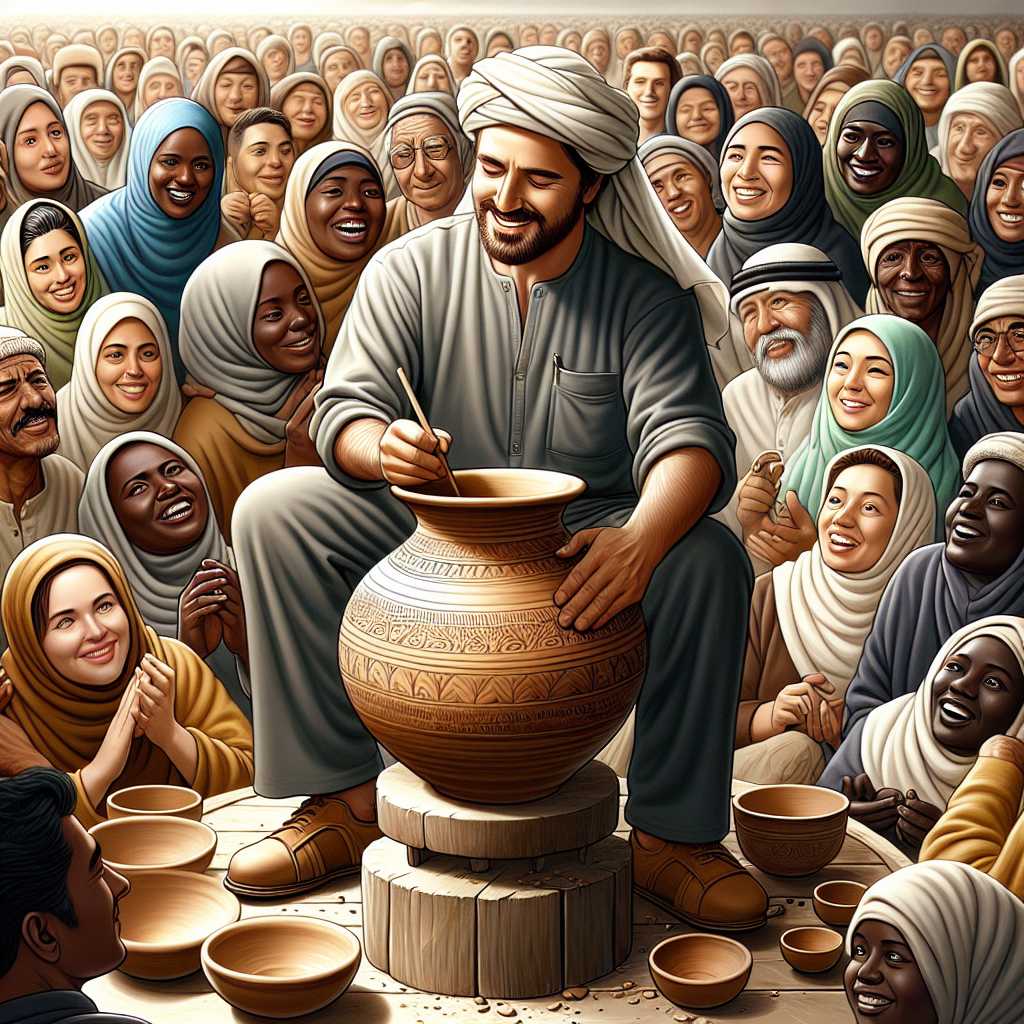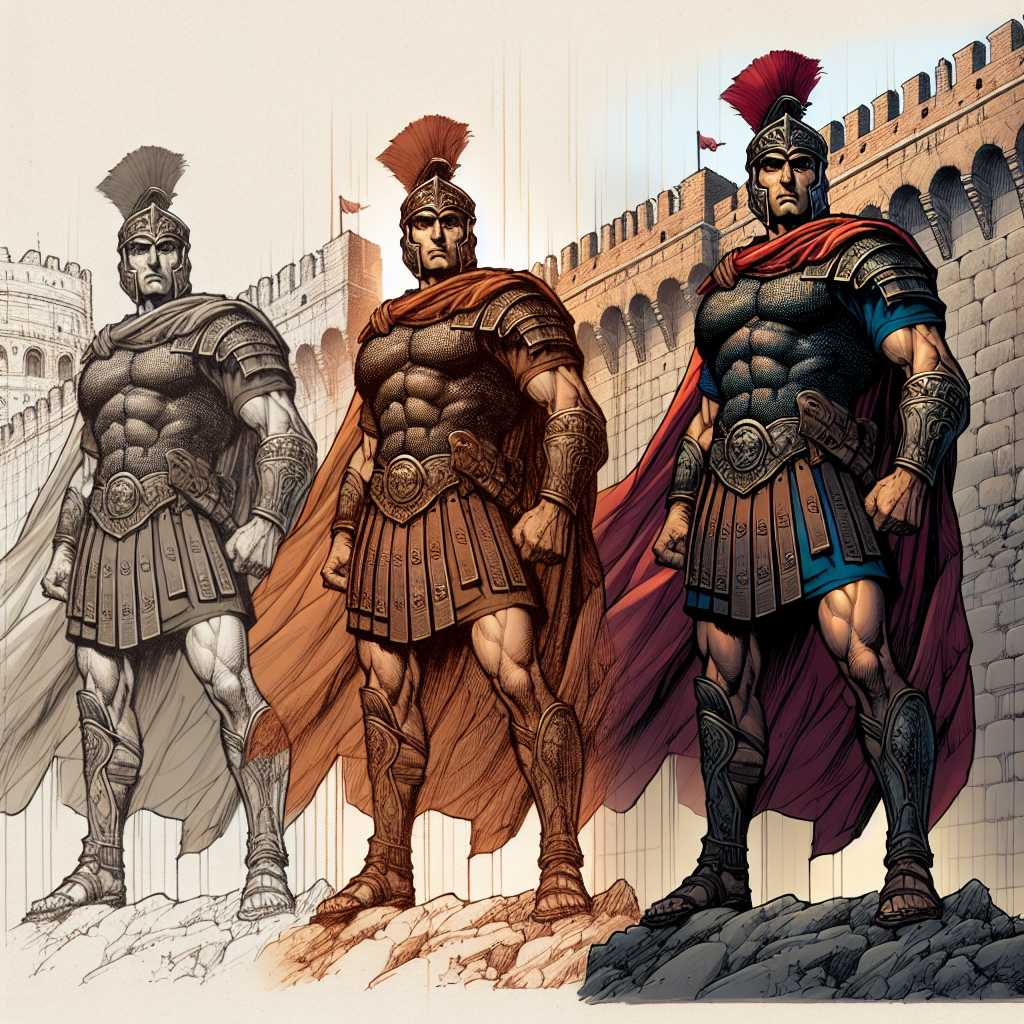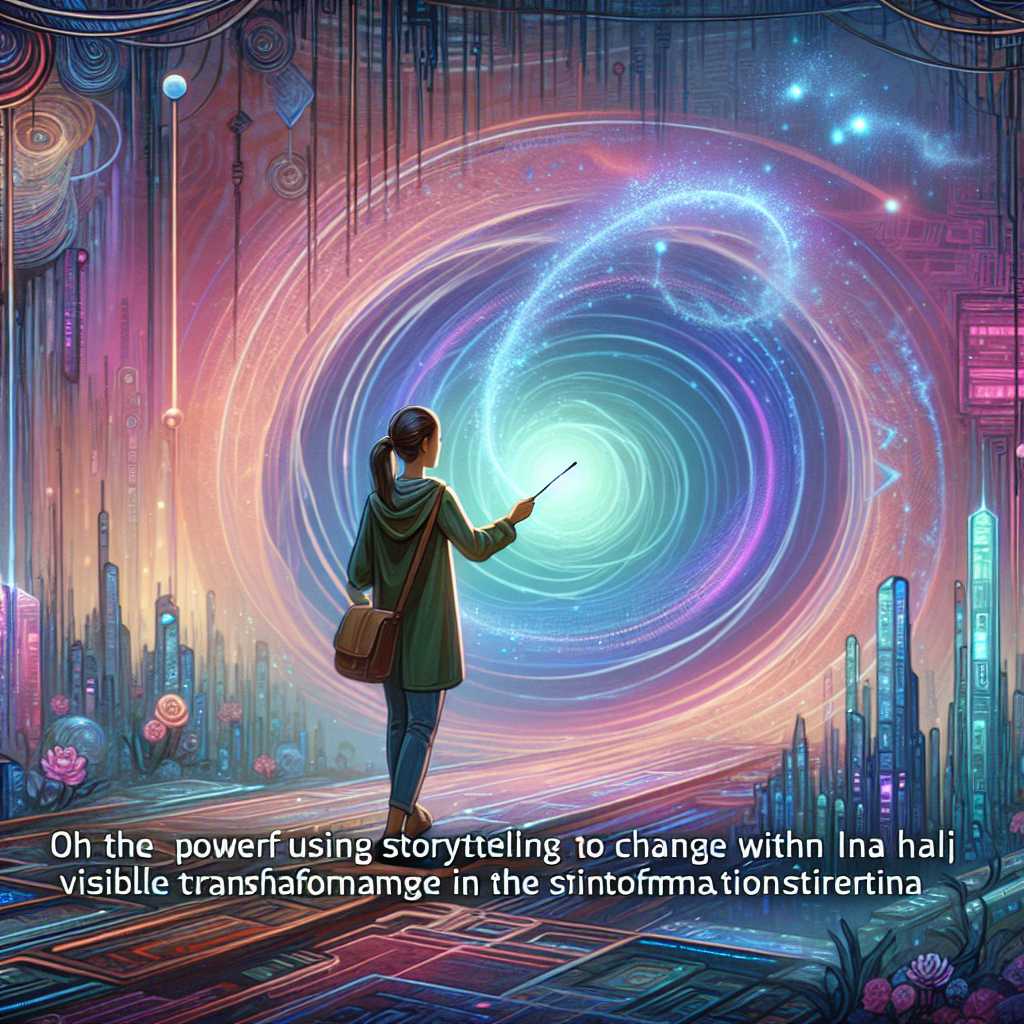
Once upon a time, in a bustling village surrounded by verdant hills and whispering woods, there lived a kind-hearted potter named Eli. He was known far and wide not only for his exquisite pottery but also for the joyful tales he wove into each of his creations. Every morning, as the sun peeked through his window sprinkling gold over his humble workshop, Eli would be found singing to the rhythm of his wheel, his hands dancing with clay, crafting pots and vases as if they were to contain not merely flowers and water, but the very essence of happiness.
Now, it so happened that one bright spring day, Eli set his heart upon making a very special pot for the upcoming festival of blooms, a day when every household in the village joyfully decorated their homes with the most beautiful flowers. However, this was not to be just any pot; it was to be the 'Pot of Cheer', adorned with patterns of the joyous moments of village life, so that whoever looked upon it would feel a rush of happiness flood their heart.
Eli worked with tender care, his skilled hands molding the raw clay. As he worked, he hummed an ancient melody which was said to have the power to breathe life into inanimate objects. Days turned into nights and nights back into days as he poured his soul into crafting the pot. He intricately etched scenes of the children playing in the meadows, of the youngsters dancing under the moon, and the elders sharing stories beneath the ancient oak tree.
As the festival drew near, Eli placed the pot in the kiln, his heart swelling with hope. He whispered a little prayer that the pot would survive the fire and emerge strong and beautiful. On the night before the festival, the kiln cooled and Eli, with hands trembling from anticipation, gently unveiled the Pot of Cheer.
It was magnificent. The colors burst forth in jubilant splashes of cobalt blues, emerald greens, and radiant yellows, each hue an echo of the bliss contained in village life. It seemed to emanate a light of its own, as if the pot had captured the very essence of joy.
The next morning, as the festival commenced, the villagers gathered in the square where Eli unveiled his masterpiece. A hush fell over the crowd as they beheld the Pot of Cheer. Suddenly, as if by magic, a light breeze carried the laughter of the children from the meadows, the music from the dance, and the muffled voices of the elders from beneath the oak. It was as though the pot vibrated with life, stirring memories of happiness held dear in every villager's heart.
"Let this pot be a symbol," Eli exclaimed, "that happiness can be found in the simplest of things: in play, in dance, in stories, and in the work of our hands. Let it remind us to cherish every joyous moment."
Inspired by Eli's words and the Pot of Cheer, the villagers celebrated with renewed zeal. People danced with mirth around the pot, children giggled as they impersonated its lively patterns, and the elders, with eyes glistening, passed down tales that made the younger ones' imaginations soar.
Eli stood at a distance, his heart warmed by the sight of his fellow villagers united in harmony. It was then that a little girl, with eyes sparkling like the first star of evening, approached him, holding a single daisy.
"For you, Mr. Eli," she said sweetly, presenting the flower to him. "Your pot makes our village smile. But you should smile too, because you are the reason it exists."
Eli accepted the daisy, its tender white petals a stark contrast to his clay-stained hands. A profound sense of fulfillment washed over him, and his eyes welled up with joyous tears. He realized that true happiness does not just reside in the creations we bring forth but also in the impact they have on others.
As the festival ended and night fell, the villagers returned to their homes, their hearts as full as the moon in the late-spring sky. The Pot of Cheer was placed at the heart of the village square, beside the old oak tree—a beacon of mirth and a testament to the joys of shared humanity. The pot remained there through seasons and years, its colors never fading, a symbol of Eli's love and the perpetual happiness of the village.
And so, from that day forward, visitors from faraway lands would journey to the village just to see the famed Pot of Cheer. They would leave with their spirits lifted, for they had glimpsed something rare and pure—a piece of a simple potter's heart and the collective joy of a humble village.
And thus, reader, the story goes that happiness, much like Eli's cherished creation, is not a solitary spark but a flame kindled by community, kept alive through stories, and shared freely with every soul we encounter.
The end.










